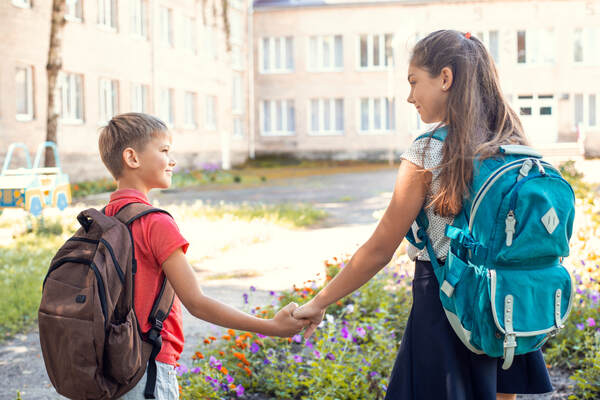How To Help Kids Handle Transitions
Transitions can be tough for human beings, especially young children who struggle to control their emotions. Humans are creatures of habit, inclined to develop routines. This is especially true for kids. With kids, however, it can be difficult to break them out of a routine and move on to another phase of their life.
To put it quite simply, transitions occur when children have to stop one activity and move away from a routine to proceed to other activities or through life changes. One of the most prominent transitions kids go through is when they graduate from preschool and transition to big school. In the latter, they’ll face more challenges, like gaining independence, lessening their tendency to hover by their parents, and getting used to many more classmates, to name a few.
Dealing with this can be challenging for a parent, too, but you both can work through this as a team. Here are ways to help children cope better with transitions and routine changes.
Communicate With Your Child
Communicating with your child is the only way for you to be aware of their feelings. Children go through transitions differently; some have it easy, while others find it a bit more challenging. Talk to your child as they go through this significant change in their life so you know what they’re feeling and what you can do to help them.
In most instances, transitions are hard for kids because of their fears. If you can help calm down their fears by assuring them that they don’t have to go through this change alone, they won’t have to dread the transition so much.
With your narrative, you can change the scenario from negative to positive, where this time around, your child will be looking forward to this new phase in their life.
Make Goodbyes Easier
Goodbyes are always the hardest for children, mainly because they find comfort in being with their parents. If this transition is going to be their first time away from you, you can expect the situation to be even more challenging.
Make goodbyes easier by helping them understand that you’re not going away. It’s just a temporary goodbye for at least a few hours. When they’re done with school, you’ll be there outside the school gate, for instance, waiting for them.
That being said, it’s essential to be consistent and punctual. Remember dismissal time, and be sure to wait before that time. If you’re late, you’re only making the transition harder for your kid because they’ll have added fears that no one’s coming to pick them up.

Allow Them To Join In The Preparation
If the transition is due to moving to another state (or home), as stressful as it might be, let the kids join in every decision-making whenever possible. The same holds for big schools. Take them with you as you do school supplies shopping, where you also give them a chance to choose their school supplies.
The more involved the children are, the less foreign this change will feel to them. They can be more attuned to enjoying the whole process because they know what to expect. They’d likely be excited to move into their new home to enjoy their new room or look forward to a new school so they can use the supplies they’ve just bought.
These are only little things that go a long way in helping ease the negative emotions a kid feels about any major life transitions.
Validate Your Kid’s Feelings
Parents often worry that their kid’s big feelings get amplified if they validate them. However, the opposite is true. Having someone genuinely understand their feelings allows children to process their emotions better and eventually let go.
This suggestion, therefore, goes hand in hand with communicating with your child. When you do so, you’re not just talking to them and getting a grasp of what they feel but also validating how they feel: ‘It’s okay, sweetie. Mom’s been there too. I understand you. I’ve also had to move from kindergarten to first grade in a new school.’
Sometimes, kids need to feel understood. And when you give them that, you’re also enabling a newfound sense of confidence they may have never even thought they’d be able to gather.
Smoother Transition To Help Your Child
True enough, change is the only constant thing in this world. It’s often labeled as inevitable, which children and adults will eventually face at certain points in their lives. This is where transitions come in. For children, transitions can be a stressful time, where they’ll find it hard to navigate through their emotions and adjust to what is the new norm in life. Try out the strategies above so that, hopefully, you can foster a smoother transition for your kid and the whole family going through the same.
Sending your child to daycare for the first time? Explore strategies to help your child adjust.





